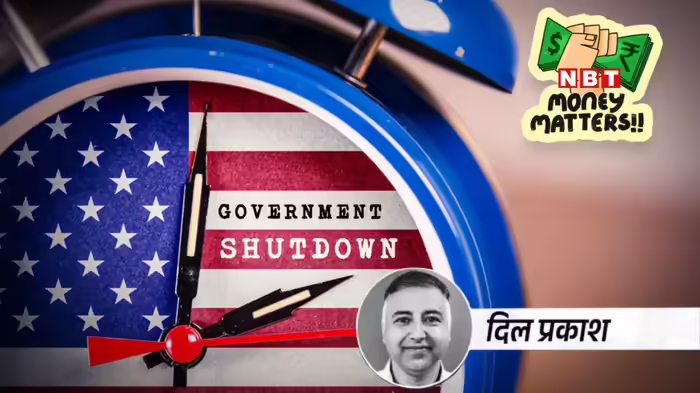
The United States, under former President Donald Trump—who once labeled India a “dead economy”—is itself teetering on the brink of economic distress. The longest government shutdown in U.S. history has begun to show its severe impact, costing the country an estimated $15 billion every week.
Record-Breaking Shutdown
The current shutdown, which began on October 1, has already lasted 38 days, surpassing the previous record of 35 days in 2018-19. Unlike the partial shutdown then, which affected only 10% of federal spending, this shutdown has disrupted the entire federal budget. Bloomberg reports that the ongoing shutdown is now starting to take a heavy toll on multiple sectors of the U.S. economy.
Air Travel and Federal Operations Hit Hard
According to the Federal Aviation Administration, staffing shortages have forced flight reductions at the 40 busiest airports in the country. Over 1,200 flights were canceled on Friday alone, and with Thanksgiving just weeks away, disruptions could worsen. Flight cancellations are expected to rise from the current 4% to 10% next week.
Economic Ripple Effects
Economists warn that the shutdown could have wide-ranging consequences. Unlike short-term shutdowns, this prolonged halt is already slowing economic growth. Nearly 1.4 million federal employees have not received paychecks, even as many continue to work. Government data releases have halted, leaving investors and policymakers in the dark. Goldman Sachs chief political economist Alec Phillips recently highlighted that this shutdown could have the largest economic impact of any shutdown on record.
GDP Impact
Goldman Sachs estimates that the shutdown could reduce U.S. GDP growth by 1.15% in the fourth quarter. The Congressional Budget Office (CBO) predicts a 1–2% decline in GDP, with potential permanent losses of $7–14 billion if the shutdown continues. Goldman Sachs has revised its Q4 GDP growth forecast to just 1%, down from an earlier estimate of 3–4% in Q3. Experts caution that the unprecedented length and scope of this shutdown make it far more damaging than previous shutdowns.
Data Blackout and Policy Uncertainty
The shutdown has also caused a blackout in government data. David Kelly, Chief Global Strategist at J.P. Morgan Asset Management, notes that the economy was already slowing, and the shutdown has exacerbated the situation. Federal Reserve Chair Jerome Powell acknowledged the uncertainty, comparing it to driving in fog: “You slow down because you can’t see. That’s what we’re doing.” The Fed anticipates potential increases in the unemployment rate for October due to the shutdown, while the White House has not committed to backpay for furloughed employees, raising the risk of lasting economic damage.
Long-Term Implications
The shutdown presents a major challenge to the U.S. economy, directly affecting millions of Americans and increasing future economic uncertainty. Its impact extends beyond federal employees, disrupting ordinary citizens and the global economy. With critical data unavailable, policymakers and institutions like the Federal Reserve are operating under significant uncertainty, making it difficult to take corrective action. The duration and ultimate consequences of this shutdown will play a decisive role in shaping America’s economic trajectory.
Discover more from SD NEWS agency
Subscribe to get the latest posts sent to your email.
